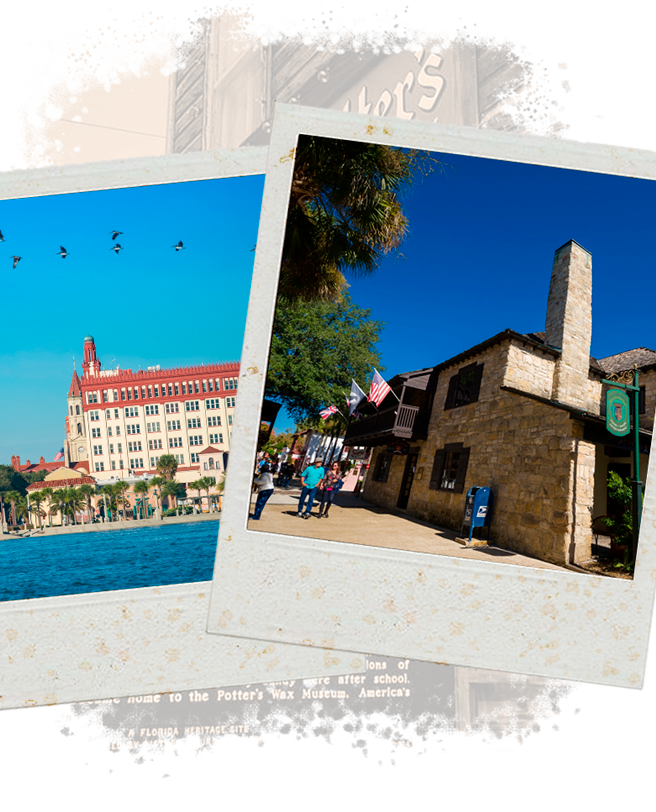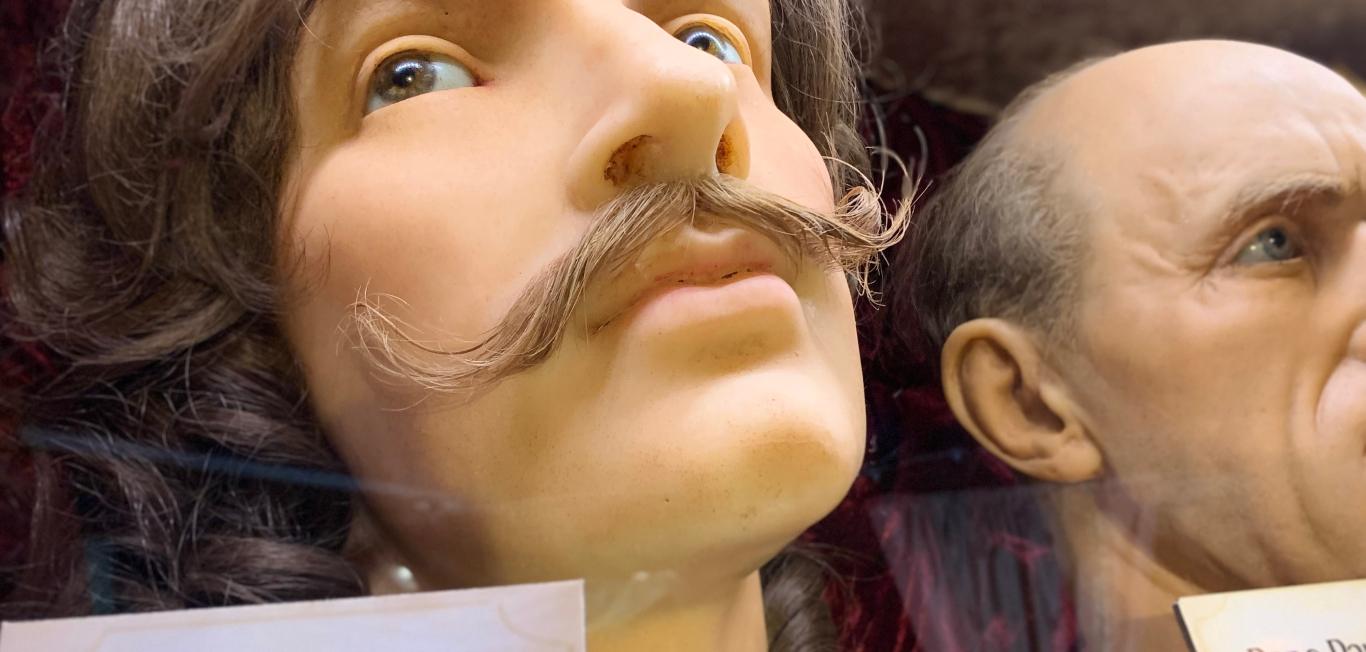Top Reasons to Visit St. Augustine, FL
As far as attractions go, Potter’s offers great value. Unlike any attraction of its kind, it is housed inside the oldest pharmacy in the United States. This is the oldest wax museum in the country and there are a wide variety of figures to examine ranging from Roman Centurions to celebrities, athletes and political leaders. There is even a section devoted to horror movies! There is a good chance that an artist will be on site to show you the workstation where all the magic happens.
Visit us after hours with Ghosts & Gravestones St. Augustine for an extra spooky experience – Potter’s Wax Chamber of Horrors.
St. Augustine
Museum Collection
For those who admire superior craftsmanship and photo-realistic art, a stop at Potter’s Wax Museum is not something to be missed. George L. Potter, the museum’s founder, was fascinated by the painstaking accuracy and exquisite detail of the wax figures he encountered when on holiday in London when he was a boy. With this inspiration in his heart, Potter set out to preserve the likenesses of great American leaders and statesmen for posterity and proceeded to procure the very best wax from France, the finest hair from Italy and the most highly skilled artisans to give shape and form to it all. Belgium was where the first production facility was located and the first run of wax figures found it way to what would become Potter’s Wax Museum back in 1949.
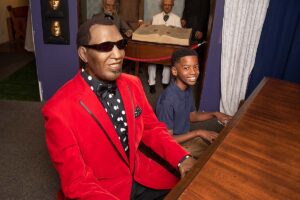
St. Augustine
Historic District
Many of St. Augustine’s restaurants, retail, hotels, and attractions are found smack dab in the middle of the Historic District. This part of the city dates back to the 18th century and the layout of its streets remains consistent with how the citizens of the 1700s would have likely encountered them and are as readily walkable as those of a much more modern city. Not simply a hub of commerce, the district’s proximity to the waterfront lends itself to great photo opportunities of the neighboring Matanzas Bay.
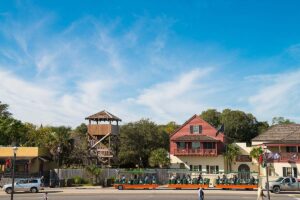
Castillo de
San Marcos
Constructed by the Spanish between 1672 and 1675 to fortify the tiny garrison town against invasion as well as to defend the primary trade route to Europe and the Gulf Stream, the Castillo de San Marcos is a historically significant structure. Constructed of a form of a shell stone called coquina quarried from Anastasia Island, the fortress is unique in North American architecture.
Explore the fortress by wandering through the fort’s casements and taking in the exhibits. Re-enactors in period dress around the fort often give historical weapons demonstrations as well as presentations of the life and experiences of the colonists who lived there.
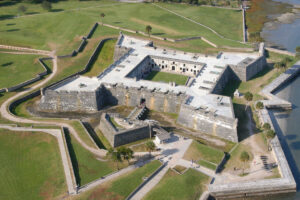
Flagler
College
Established in 1968, Flagler College is a four-year, private, liberal arts institution of higher education. Henry Flagler, co-founder of Standard Oil, railroad magnate and one of Florida’s most revered and important figures, originally constructed it as the Ponce de Leon Hotel. On land that was once an orange grove, he wanted to capture the essence of Old Europe but with a Spanish Revival-style building adorned with Moorish Revival architectural elements. Prominent personalities like Mark Twain, President Theodore Roosevelt, Babe Ruth and Babe Didrikson were known to frequent the luxury hotel in its heyday. A tour of the college enables you to journey back to the Gilded Age for an opulent turn-of-the-century hotel experience.
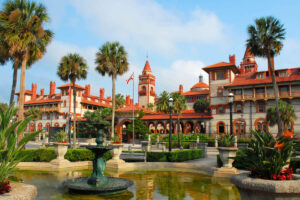
Lightner
Museum
Housed in the historic former Alcazar Hotel, the Lightner Museum boasts a collection of mostly American Gilded Age pieces. In addition to Victorian art glass by Louis Comfort Tiffany, the museum features mechanized musical instruments that date from the 1870s through the early 20th century. The Spanish Renaissance Revival-style building was added to the National Register in 1971.
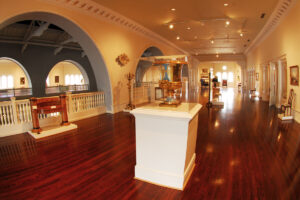
Villa
Zorayda
Inspired by Granada‘s 12th-century Moorish Alhambra Palace, the Villa Zorayda is a historic house museum built in 1883. The residence is furnished with art, antiques and Franklin Smith family heirlooms. Listed on the National Register, the home also features Oriental rugs, Egyptian artifacts and brass lamps from Damascus.
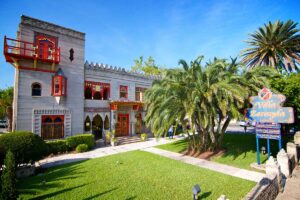
St. George
Street
A pedestrian-only thoroughfare, bustling St. George Street is the epicenter of downtown St. Augustine. Chock full of shops, restaurants, art galleries and attractions, this historic street is a must for any visitor to the Nation’s Oldest City.
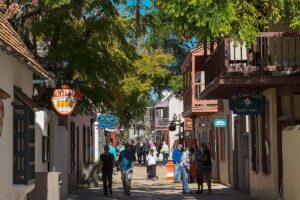
Plan Your Visit
As the oldest continuously occupied European settlement in the U.S., St Augustine is a treasure trove of history spanning nearly 500 years. Its National Historic Landmark District, full of museums and ancient settlements from the various world powers that took control over the city throughout the centuries, is a popular destination for its many visitors. St. Augustine exudes an Old World charm not often seen in an American city which adds to the area’s singularity. Places like St. George Street, a pedestrian-only street that courses through the very heart of the city, set this place apart. The street takes you past locally owned artisanal shops, restaurants, lively taverns, and lush courtyards and it isn’t hard to imagine a Spanish or British blacksmith toiling away here as passersby inspect their wares hundreds of years ago. When you boast attractions called the Oldest House, the Old Jail, and the Oldest Wooden Schoolhouse, it’s no wonder this place is dubbed the ‘Ancient City.’ Then again, this is also the home of the Fountain of Youth. However you choose to enjoy your stay in St. Augustine, your journey will take you back in time while keeping you firmly afoot in the present.
